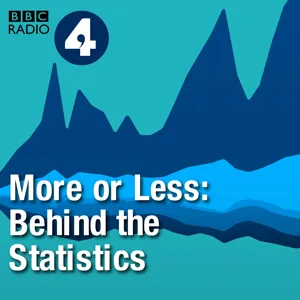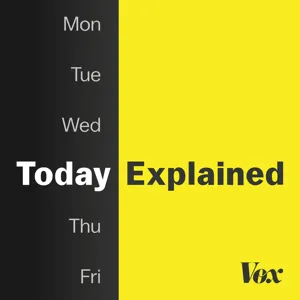Podcast Summary
Understanding the true scope of COVID-19 deaths: Doctor Oak's analysis suggests the UK's peak in COVID-19 deaths might have already passed, emphasizing the importance of accurate data and analysis in interpreting pandemic trends.
Understanding the true scope of the current situation regarding the coronavirus pandemic, particularly in terms of the number of deaths, requires looking beyond the headline figures. Doctor Jason Oak, a senior statistician at the University of Oxford, explains that the data released by NHS England, which is often reported in the press, can be misleading because it refers to deaths that occurred over several days. By recalculating the figures to reflect the number of deaths that occurred on each day, it becomes clearer to detect the peak and subsequent decline. According to Doctor Oak's analysis, the peak in terms of deaths in the UK may have already occurred on the 8th of April. Despite the ongoing challenges and uncertainty, it's important to stay informed and consider multiple perspectives when interpreting data related to the pandemic. Additionally, the discussion touched upon various topics including weight loss, insurance, and even the loudness of birdsong. But the main focus was on the value of accurate data and analysis in understanding the current situation.
Peak of UK COVID-19 deaths possibly on April 8th: Analysis of Public Health England data suggests earlier measures like working from home and school closures may have slowed COVID-19 spread, but it's unclear if lockdown caused peak and decline.
The peak of COVID-19 deaths in the UK may have occurred on April 8th, suggesting that the number of new infections peaked around three weeks earlier. The decline in deaths since then has been slow, and it may take a while for the country to return to normalcy. This analysis, based on data from Public Health England, indicates that earlier measures such as working from home and school closures may have contributed to the reduction in infections before the full lockdown was implemented. However, it is still unclear whether the lockdown itself caused the peak and subsequent decline. It's important to note that comparing COVID-19 numbers between countries without adjusting for population size can be misleading.
Comparing coronavirus stats between countries using raw numbers is misleading: Population size differences can skew comparisons, but factors like population density, interconnectedness, demographics, and recording methods make accurate comparisons challenging.
Comparing coronavirus statistics between countries based on raw numbers can be misleading due to significant population size differences. For instance, the US has the highest number of cases and deaths, but its population is much larger than countries like the UK, Italy, and Spain. When adjusted for population size, smaller countries like San Marino, Belgium, and Andorra rank higher in deaths per million people. However, it's essential not to make direct comparisons and label countries as doing better or worse based on these numbers alone. Factors like population density, interconnectedness, underlying demographics, and recording methods make accurate comparisons challenging. As Crystal Donnelly, a professor of statistics and epidemiology, explains, there are numerous complexities beneath these numbers that need consideration.
Comparing COVID-19 deaths internationally: Focus on excess mortality: Excess mortality is a more reliable way to compare COVID-19 deaths internationally, allowing for adjustments based on demographics and identifying unrecorded deaths. Be cautious with data presentation to avoid confusion.
Comparing COVID-19 death statistics between countries can be challenging due to differences in reporting methods and testing approaches. Professor Crystal Donnelly suggests focusing on excess mortality as a more reliable way to make international comparisons. Excess mortality measures the overall increase in deaths in a given period compared to the same period in previous years. This approach allows for adjustments based on age and gender distributions and can help identify deaths from COVID-19 that may not have been officially recorded. Additionally, excess mortality data can provide insights into collateral damage caused by the pandemic, such as delayed diagnoses and treatments for non-COVID conditions. While it's important for countries to focus on their own responses, learning from the experiences of others can be valuable in the long run. However, careful analysis is required to make meaningful comparisons. Regarding the listener's query, Adam Knight Marchighi, he expressed confusion regarding the numbers in an NHS infographic on social distancing. Despite his efforts, he couldn't get the numbers to align. This issue might be due to potential rounding errors or misinterpretations of the data presented in the infographic. To clarify, it's essential to read and understand the context provided with the data to ensure accurate calculations.
NHS coronavirus leaflet calculation error: The NHS coronavirus leaflet contained a calculation error, leading to an overestimation of potential cases. Double-checking mathematical calculations is important, especially in public health information.
The calculation shown on the NHS leaflet regarding the potential number of cases caused by an individual with a coronavirus infection rate (r) of 2.5 over a month does not match the mathematical calculation. The spreadsheet created by listener Adam, as well as Matt Parker's independent verification, shows that the calculation in the leaflet results in approximately 200 and 44 cases, not the 406 cases stated. This discrepancy highlights the importance of double-checking mathematical calculations, especially in important public health information. The r value, which represents the average number of people one person will infect, is not just determined by the disease itself but also by societal and environmental factors. It's crucial to remember that the r value is an approximation and can vary based on individual interactions.
Understanding the difference between new and total COVID-19 infections: When analyzing COVID-19 data, it's essential to distinguish between new and total infections. Total infections include all cases since the start of the pandemic, while new infections represent the number of people infected in a specific time period. To get the total number of new infections, add up the new infection numbers for each week.
When analyzing COVID-19 infection data, it's crucial to understand the difference between new infections and total infections. Matt Parker explained this concept during a podcast interview, where he pointed out that the numbers in an NHS leaflet represent total infections, not just new ones. To get the correct figure, one must add up the number of people infected in each week. Meanwhile, listener George Montgomery raised concerns about the high number of NHS staff deaths from COVID-19 and wondered if the risk was higher than reported. Kate Lamble, the producer, attempted to put the numbers into perspective by comparing the deaths to the overall working-age population. Based on the Office for National Statistics' estimates, there are 42 million working-age people in the UK, and the government's coronavirus statistics showed that 1 in 19,000 of these people had died in hospitals from COVID-19. However, it's assumed that working-age people, particularly NHS workers, are less likely to die outside hospitals. Therefore, the risk to NHS staff might be lower than the reported 1 in 19,000.
NHS staff COVID-19 deaths might be underestimated: NHS staff and other essential workers at higher risk, actual deaths uncertain, general population with higher health risks should be considered.
The number of NHS staff deaths from COVID-19 might be higher than estimated, as they are at increased risk due to their close contact with infectious patients and their awareness of the importance of hygiene and precautions before the lockdown. The actual number of deaths among NHS staff is uncertain, as not all deaths may be reported or publicly disclosed. Additionally, the risk for other essential workers, such as transport workers, who interact with the public but do not have the same level of protective equipment as NHS staff, should also be considered. The discussion also highlighted that the general population may have a higher proportion of people with underlying health conditions, which could affect their mortality risk from COVID-19. Overall, the risk and impact of COVID-19 on different populations and occupational groups should be carefully considered and monitored.
Bus workers disproportionately affected by COVID-19 with higher mortality rate, quieter environment leads to louder bird singing: Bus workers face higher COVID-19 mortality rate while quieter environment during lockdown leads to louder bird singing due to less masking noise and birds adjusting to quieter surroundings
Bus workers have been disproportionately affected by COVID-19 with a higher mortality rate compared to the general population and the working age population in London. Meanwhile, for those of us fortunate enough to work from home, we've been noticing a quieter environment due to decreased human noise, leading to the perception that birds are singing louder than usual. This is not just our imagination; research from the Institute for Environment Design and Engineering at UCL shows that London's normally bustling areas are much quieter since the lockdown. The birds' increased singing could be due to spring being the time for setting up new territories and finding mates, as well as the absence of masking noise from traffic and airplanes. Additionally, birds adjust their singing based on their environment, and they may be singing more quietly due to the lumbar effect, where background noise causes birds (and humans) to speak louder, making their own singing seem quieter in comparison. So, the quieter environment could be contributing to the perception that birds are singing more loudly.
Birds might sing quieter during noisy events: Birds may appear louder in noisy environments but sing quieter due to decibel logarithm, potentially not noticeable to human ears.
Despite appearing louder due to external noise, birds might actually be singing quieter during noisy events like a passing airplane. This is because a 5 decibel increase in singing amplitude is equivalent to a near doubling in volume from a physics perspective. This effect might not be noticeable to the human ear due to the logarithmic nature of decibels. So next time you think birds are singing more loudly in a noisy environment, it might be the opposite. This interesting finding was discussed on the BBC Radio 4 program "More or Less" with Dr. Sue Ann Zollinger from Manchester Metropolitan University. Other topics covered in the episode included the logarithmic scale of decibels, the effects of noise pollution on birds, and the importance of delivering a smile through gifts. Additionally, the program featured sponsor messages from 1800 Flowers and UnitedHealthcare's short term insurance plans.




